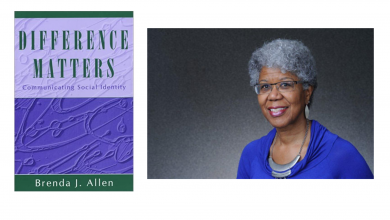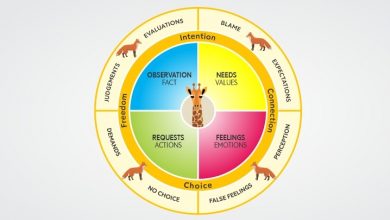Open first
Why and how to create spaces where participants feel more comfortable to open up vulnerably by us opening up first.

Why did I choose this tool?
One of many the deciding moments for me to quit innovation consulting and to build an app focused on emotions was quite simple: I liked a girl and I wanted to know if she liked me. However, I had been hoping that she would tell me how she felt about me BEFORE I told her how I was feeling about her. I finally got to the point where I said to myself, “If I want to know how she feels about me, I need to first tell her how I feel about her.” I called her and left a message where I said that I was attracted to her and liked spending time with her. Later that day, she called me back and left a message saying that she had just got out of a long-term relationship and was a little hesitant to date again. It worked. Not the relationship, but the disclosure. By opening up first, and exposing myself to the vulnerability of not knowing how she would receive it, it seemed to inspire her to open up with me.
I tell this story because I have seen how this simple principle has changed the way I interact with almost everyone. Whenever I want to create an opportunity for more meaningful communication, as a trainer or personally, I try to open up first, and lead with my vulnerability.
How does this apply to being a trainer?
As a trainer, we can control the environment, to an extent, to make people more comfortable to express themselves. This includes changing lighting, number of people, frequency of meeting, type of people meeting, etc. However, one of the simplest ways for us to set the energy of the room is to express that energy ourselves. There are many situations in training where opening up first can create a feeling of safety for others to open up and discuss underlying emotions. In the beginning of the workshop, we can open up about who we are and our expectations and fears, letting them know it’s OK to have expectations and fears. In the middle of the workshop, we can pause and let them know how we’re feeling, even if it’s a “negative” feeling, so that they may feel permission to feel and express it as well. In reflection, we can open up first about why we’re curious about certain things before we ask them questions about them—this can particularly help reduce confusion and increase confidence, which I’ll explain more in the content section.
Content
In any interaction, someone has to go first. Someone has to speak first, move first, leave first, greet first, ask first, etc. The same applies for self-disclosure—someone has to open up first.
We humans like to follow the leader, perhaps lending from the mirror neurons—we learn by watching and copying what others are doing. This doesn’t happen all of the time but can happen many times, especially in the learning context. We also have a tendency to mirror those who are in authority positions—we see them as the role models and we do as they do. We want to “Be like Mike,” (a reference to an American advertisement where kids wanted to be like Michael Jordan), and will often replicate their styles.
As a trainer, we are an authority figure in a learning context, which means that participants may be even more likely to mimic our behavior. With this in mind, if we are trying to create opportunities for meaningful communication, we may see more success by starting with meaningful communication ourselves. We communicate on many different levels about many different topics, everything from the weather to politics to sports to books to people we know. Some of the most meangingful communication is when we communicate not just about external things, but how we internally perceive the external things. When we open up in self-disclosure, we reveal what we are thinking, feeling, believing, dreaming, and doing, and show the world our interior process. With language, we can describe internal states that otherwise people cannot very easily access. It is not only with verbal language we can do this, we can also do it with visual representations, bodily movements, and other forms of expression.
If the goal is to create opportunities for meaningful communication and to develop the skill to deal with emotions and ask for support, we can go about it in a few ways.
- If they open up first, then we won’t open up.
- If they open up first, then we will open up.
- If we open up first, then they won’t open up.
- If we open up first, then they will open up.
In the first two, we are not the leader, and therefore have less control over whether we will create a deeper dialogue. In 1 and 2, we may try to get them to open up first, by asking certain questions or putting them through certain exercises that will elicit deeper thoughts and emotions, but it is not guaranteed to work. If they don’t open up, then we won’t open up and we don’t talk on a deeper level. However, in scenarios 3 and 4, if we open up first, we can guarantee that at least someone is opening up. This does not mean that they will open up, but it sets the example for them and sets the mood. Again, considering we are often in the position of authority as trainer and they are in a learning context, the likelihood of 4 seems higher than 3—when we open up, they are likely to open up as well.
Opening before questioning
An example of how this often plays out—asking questions. Often when we ask a question to a participant, we will start directly with the question:
“If you could change this activity, what about it would you change?”
As a participant, I may be unsure why the trainer is asking this question:
- Does the trainer want to change the activity?
- Does the trainer feel frustrated that people didn’t seem to like the activity?
- Does the trainer have someone on his/her team who wants him/her to change the activity but s/he doesn’t want to change it and is looking for justification to not change it?
- Does the trainer not know what else to ask?
- Does the trainer ACTUALLY want to hear what I have to say?
- What will the trainer do with my suggestion?
These and many other questions may run through the mind of the participant and influence whether they open up and share their honest suggestion or give the answer they think that the trainer wants. The principle of open first can reduce much of this anxiety in the participant. If instead of starting directly with the question, we can open up first and tell the participant what emotions inside of us are driving us to ask the question.
“I feel a bit worried that this activity didn’t meet your expectations and I want to try to improve it for future groups…so if you could change this activity, what about it would you change?”
This can be even more important to do when the conversation may go to a deeper emotional place. If we’re asking the participant about why they’re shouting, starting to cry, or staring blankly into space, they may be even more hesitant to open up if we don’t open up first and let them know why we’re asking, why we’re concerned, or why we’re there.
Closing
In asking the right questions to elicit unclear or unexpressed negative feelings, I believe opening up first can help alleviate some of the uncertainty that the participant or fellow trainer may be feeling from our side. Often in these situations, when we feel unclear on something, other people may also feel unclear, and by opening first, we can provide more clarity to the other side and hope that reciprocation will lead them to do the same. Even if they don’t, then we have already added more clarity to the overall situation.
Reflection Questions:
- Do you have a tendency to open up quickly with new people?
- Do you prefer more to ask questions or to answer them?
- Do you often question why people are asking you certain questions?
- Do you often start difficult conversations or wait for the other person to start them?
- How much do you open up to your training team?
- How much do you open up to the participants?
- How do you feel when someone opens up to you?
- How do you feel when all of the attention is on you?
Exercises:
How to apply it in everyday life
- Instead of waiting for someone to tell you how they’re feeling, you can start by telling them how you’re feeling.
- When choosing a restaurant—you can start by saying, “I’d prefer to eat this, this or this, and I’m also not very picky today on where we go…where would you like to go?”
- When resolving conflict—often we expect the other to apologize first, but with this principle, we apologize first and realize that often the other person will apologize as well.





